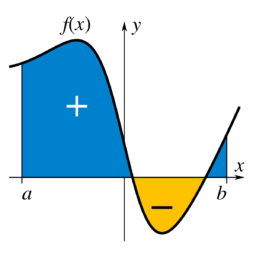这是Math 130A,Ordinary Differential Equations的一次作业分析
determine whether the given functions are linearly dependent or linearly independent. If they are linearly dependent, find a linear relation among them.
$$
f_{1}(t)=2 t-3, \quad f_{2}(t)=t^{2}+1, \quad f_{3}(t)=2 t^{2}-t, \quad f_{4}(t)=t^{2}+t+1
$$
We have $f_{1}(t)=2 t-3, f_{2}(t)=t^{2}+1, f_{3}(t)=2 t^{2}-t,$ and $f_{4}(t)=t^{2}+t+1 .$ If these
functions are linearly dependent, then there exists a set of integers $k_{1}, k_{2}, k_{3}, k_{4} \in \mathbb{Z}$ such that
$$
0=k_{1} f_{1}+k_{2} f_{2}+k_{3} f_{3}+k_{4} f_{4}=k_{1}(2 t-3)+k_{2}\left(t^{2}+1\right)+k_{3}\left(2 t^{2}-t\right)+k_{4}\left(t^{2}+t+1\right)
$$
We can group terms and observe that $-3 k_{1}+k_{2}+k_{4}+\left(2 k_{1}-k_{3}+k_{4}\right) t+\left(k_{2}+2 k_{3}+k_{4}\right) t^{2}=$
0. For this expression to hold for all $t,$ we must have all the coefficients be 0 :
$$
\begin{array}{r}
-3 k_{1}+k_{2}+k_{4}=0 \\
2 k_{1}-k_{3}+k_{4}=0 \\
k_{2}+2 k_{3}+k_{4}=0
\end{array}
$$
This is a system of three linear equations with four unknowns, so it is underconstrained and we must have one free parameter. In particular, this means that the given functions are linearly dependent. We are asked to find a linear relation among them, so we can solve the system and find that $k_{1}=-\frac{2}{7} k_{4}, k_{2}=-\frac{13}{7} k_{4}, k_{3}=\frac{3}{7} k_{4},$ and $k_{4}$ is a free parameter. Taking $k_{4}=1$ gives one possible solution:
$$
k_{1}=-\frac{2}{7}, k_{2}=-\frac{13}{7}, k_{3}=\frac{3}{7}, k_{4}=1
$$
$ verify that the given functions are solutions of the differential equation, and determine their Wronskian.
$$
x y^{\prime \prime \prime}-y^{\prime \prime}=0 ; \quad 1, \quad x, \quad x^{3}
$$
We are given the ODE $x y^{\prime \prime \prime}-y^{\prime \prime}=0$ and the solutions $y_{1}=1, y_{2}=x, y_{3}=x^{3}$. Verifying that they satisfy the equation is simple:
$$
\begin{array}{l}
1 y^{\prime \prime \prime}=y^{\prime \prime}=0 \text { so } x(0)-0=0 \\
2 y^{\prime \prime \prime}=y^{\prime \prime}=0 \text { so } x(0)-0=0
\end{array}
$$
$3 y^{\prime \prime}=6 x, y^{\prime \prime \prime}=6,$ so we have $x(6)-6 x=0$
Then we can compute the Wronskian:
$$
W\left(y_{1}, y_{2}, y_{3}\right)=\left|\begin{array}{ccc}
1 & x & x^{3} \\
0 & 1 & 3 x^{2} \\
0 & 0 & 6 x
\end{array}\right|=6 x
$$
find the general solution of the given differential equation.
$$
y^{\prime \prime \prime}-y^{\prime \prime}-y^{\prime}+y=0
$$
$$
y^{(6)}+y=0
$$
$$
y^{(8)}+8 y^{(4)}+16 y=0
$$
We have the equation $y^{\prime \prime \prime}-y^{\prime \prime}-y^{\prime}+y=0,$ and assuming a general form of the solution $y=e^{r t},$ we get the characteristic equation $r^{3}-r^{2}-r+1=\left(r^{2}-1\right)(r-1)=0,$ which has roots $r=\pm 1,$ where the root +1 has multiplicity $2 .$ This yields the general solution:
$$
y=c_{1} e^{t}+c_{2} t e^{t}+c_{3} e^{-t}
$$
The equation $y^{(6)}+y=0$ has the characteristic equation $r^{6}+1=0$. This is less straightforward to solve, but we can recall the method from problems 8 and 10 from this section to find the roots. Namely, expressing $-1=e^{i(\pi+2 \pi n)}$ in polar form, we have
$$
r=\left(e^{i(\pi+2 \pi n)}\right)^{1 / 6}=e^{i\left(\frac{\pi}{6}+\frac{\pi n}{3}\right)}=\frac{\sqrt{3}}{2} \pm \frac{i}{2},-\frac{\sqrt{3}}{2} \pm \frac{i}{2}, \pm i
$$
Then the general solution is a superposition of the solutions that correspond to these roots and noting that for a root that takes the form $r=\lambda+i \mu, y=c e^{r t}=c_{1} e^{\lambda t} \cos (\mu t)+$ $c_{2} e^{\lambda t} \sin (\mu t) .$ Then our general solution is
$$
y=e^{\frac{\sqrt{3}}{2} t}\left(c_{1} \cos \frac{t}{2}+c_{2} \sin \frac{t}{2}\right)+e^{-\frac{\sqrt{3}}{2} t}\left(c_{3} \cos \frac{t}{2}+c_{4} \sin \frac{t}{2}\right)+c_{5} \cos (t)+c_{6} \sin (t)
$$
The equation $y^{(8)}+8 y^{(4)}+16 y=0$ yields the characteristic equation $r^{8}+8 r^{4}+16=$ $\left(r^{4}+4\right)^{2}=0,$ which has four roots of multiplicity 2
$$
r=4^{1 / 4} e^{i\left(\frac{\pi}{4}+\frac{\pi n}{2}\right)}=\sqrt{2}\left(\frac{\sqrt{2}}{2} \pm i \frac{\sqrt{2}}{2}\right), \sqrt{2}\left(-\frac{\sqrt{2}}{2} \pm i \frac{\sqrt{2}}{2}\right)=1 \pm i,-1 \pm i
$$
Then we can read off the general form of the solution in the same way as the previous problem (noting that we have repeated roots):
$$
y=e^{t}\left[\left(c_{1}+c_{2} t\right) \cos t+\left(c_{3}+c_{4} t\right) \sin t\right]+e^{-t}\left[\left(c_{5}+c_{6} t\right) \cos t+\left(c_{7}+c_{8} t\right) \sin t\right]
$$
In this problem we outline one way to show that if $r_{1}, \ldots, r_{n}$ are all real and different, then $e^{r_{1} t}, \ldots, e^{r_{n} t}$ are linearly independent on $-\infty<t<\infty .$ To do this, we consider the linear relation
$$
c_{1} e^{r_{1} t}+\cdots+c_{n} e^{r_{n} t}=0, \quad-\infty<t<\infty
$$
and show that all the constants are zero.
(a) Multiply Eq. (i) by $e^{-r_{1} t}$ and differentiate with respect to $t,$ thereby obtaining
$$
c_{2}\left(r_{2}-r_{1}\right) e^{\left(r_{2}-r_{1}\right) t}+\cdots+c_{n}\left(r_{n}-r_{1}\right) e^{\left(r_{n}-r_{1}\right) t}=0
$$
(b) Multiply the result of part (a) by $e^{-\left(/ 2-r_{1}\right) t}$ and differentiate with respect to $t$ to obtain
$$
c_{3}\left(r_{3}-r_{2}\right)\left(r_{3}-r_{1}\right) e^{\left(r_{3}-r_{2}\right) t}+\cdots+c_{n}\left(r_{n}-r_{2}\right)\left(r_{n}-r_{1}\right) e^{\left(r_{n}-r_{2}\right) t}=0 .
$$
(c) Continue the procedure from parts (a) and (b), eventually obtaining
$$
c_{n}\left(r_{n}-r_{n-1}\right) \cdots\left(r_{n}-r_{1}\right) e^{\left(r_{n}-r_{n-1}\right) t}=0
$$
Hence $c_{n}=0,$ and therefore,
$$
c_{1} e^{r_{1} t}+\cdots+c_{n-1} e^{r_{n-1} t}=0
$$
(d) Repeat the preceding argument to show that $c_{n-1}=0$. In a similar way it follows that $c_{n-2}=\cdots=c_{1}=0 .$ Thus the functions $e^{r_{1} t}, \ldots, e^{r_{n} t}$ are linearly independent.
本质上是证明范德蒙行列式(Vandermonde matrix)不等于0
In this problem we indicate one way to show that if $r=r_{1}$ is a root of multiplicity $s$ of the characteristic polynomial $Z(r),$ then $e^{r_{1} t}, t e^{r_{1} t}, \ldots, t^{s-1} e^{r_{1} t}$ are solutions of Eq. (1). This problem extends to $n$ th order equations the method for second order equations given in Problem 22 of Section $3.4 .$ We start from Eq. (2) in the text
$$
L\left[e^{n}\right]=e^{n t} Z(r)
$$
and differentiate repeatedly with respect to $r$, setting $r=r_{1}$ after each differentiation.
(a) Observe that if $r_{1}$ is a root of multiplicity $s,$ then $Z(r)=\left(r-r_{1}\right)^{s} q(r),$ where $q(r)$ is a polynomial of degree $n-s$ and $q\left(r_{1}\right) \neq 0 .$ Show that $Z\left(r_{1}\right), Z^{\prime}\left(r_{1}\right), \ldots, Z^{(s-1)}\left(r_{1}\right)$ are all zero, but $Z^{(s)}\left(r_{1}\right) \neq 0$
(b) By differentiating Eq. (i) repeatedly with respect to $r$, show that
$$
\begin{aligned}
\frac{\partial}{\partial r} L\left[e^{t t}\right]=L\left[\frac{\partial}{\partial r} e^{n t}\right]=L\left[t e^{n}\right] \\
\vdots & \\
\frac{\partial^{s-1}}{\partial r^{s-1}} L\left[e^{r t}\right]=L\left[t^{s-1} e^{n t}\right]
\end{aligned}
$$
(c) Show that $e^{r_{1} t}, t e^{r_{1} t}, \ldots, t^{s-1} e^{r_{1} t}$ are solutions of Eq. (1).
首先可以猜出来这些是解,然后简单验证他们是解,然后我们可以根据常微分方程的存在唯一性结果确定解空间作为线性空间的维数,然后发现猜出来的解的维数恰好是那么多,于是我们猜出来了所有的解。
Math 130A,Ordinary Differential Equations
Introduction to probability and stochastic porcesses
上课听不懂lecturer ?
笔记也看不懂?
Theory 太多 …Practice题目有点hold 不住?
需要帮助,欢迎联系我们。

Math 130代写,Ordinary Differential Equations代写请认准UprivateTA™. UprivateTA™为您的留学生涯保驾护航。
关于Math 130A的更多内容请参阅一份Math130代写.
抽象代数代写可以参考一份抽象代数代写案例








[…] 关于Math 130A的更多内容请参阅一份常微分方程代写案例. […]